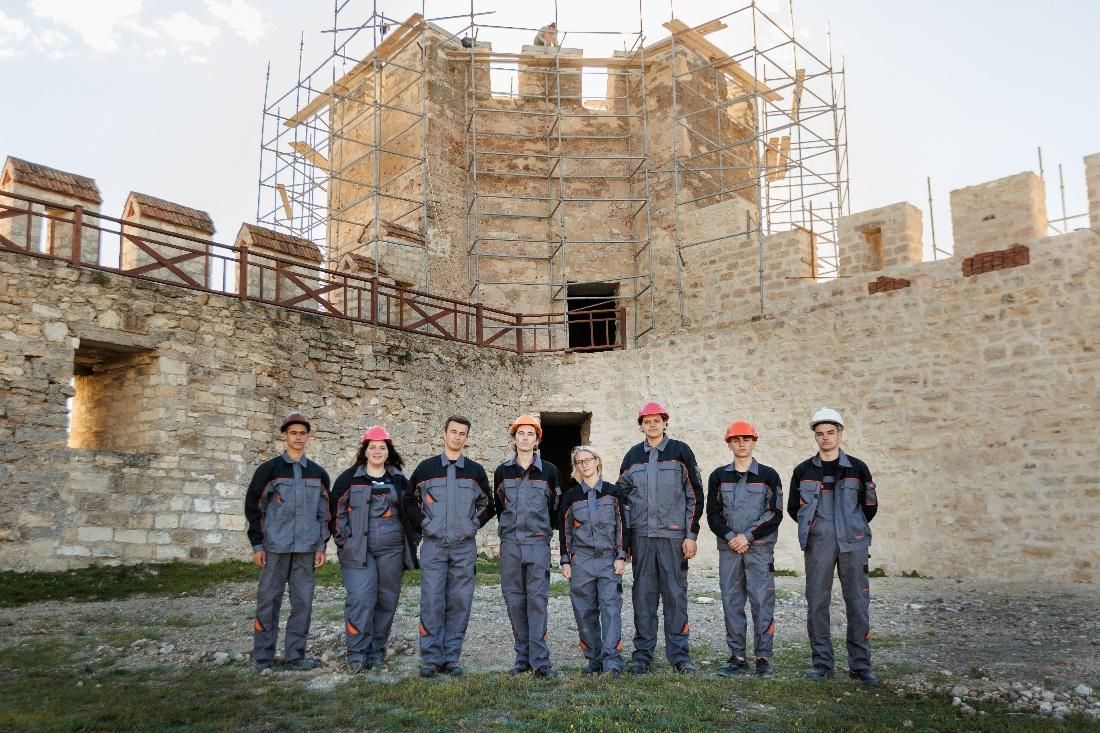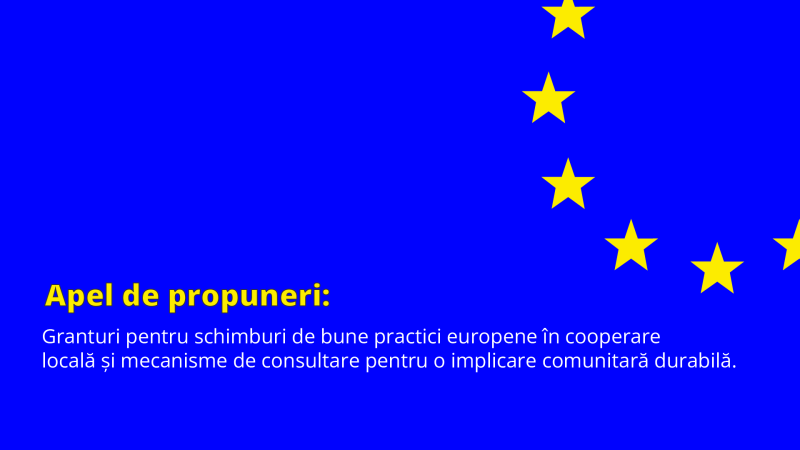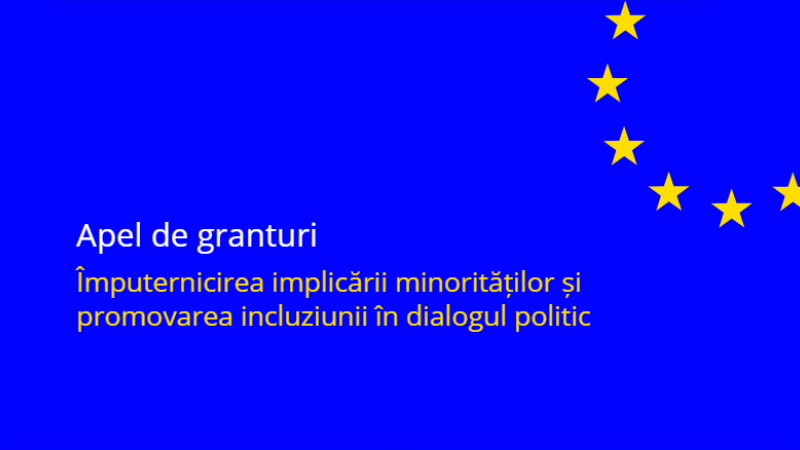
Tineri de pe ambele maluri ale râului Nistru își clădesc viitorul în domeniul restaurării și conservării monumentelor culturale
Un prim stagiu plătit pentru tineri în restaurare conservare s-a desfășurat la cetatea Tighina (Bender), cu susținerea financiară a programului Uniunii Europene „Măsuri de Promovare a Încrederii”, implementat de PNUD Moldova.
Opt tineri de pe ambele maluri ale râului Nistru au participat în perioada 3-14 octombrie la un prim stagiu plătit în lucrări de restaurare și conservare la Cetatea Tighina (Bender).
Programul a început cu o incursiune în istoria Cetății Tighina (Bender) și lecții teoretice, care stau la baza lucrărilor practice.

Iulia Răilean, elevă a Centrului de Excelență în Construcții
„E foarte interesant să vezi cum pe timpuri se realizau asemenea construcții. E impresionant. La colegiu am avut cursuri teoretice despre așa ceva, dar să participi cu adevărat la procesul de restaurare e cu totul diferit”, spune Iulia Răilean, elevă a Centrului de Excelență în Construcții.
Tinerii au aflat de la experți care sunt metodele practice de restaurare și conservare care sunt utilizate la nivel internațional. De asemenea, au avut rara ocazie de a participa la câteva lucrări de conservare desfășurate la cetatea Tighina (Bender).

„În realitate, e mult mai complicat să restaurezi o clădire, decât să faci o construcție nouă. Responsabilitatea șefului de șantier e enormă, pentru că de lucrările executate va depinde rezistența construcției pentru următoarea perioadă, pentru că așa putem să păstrăm și istoria. Urmașii noștri vor putea admira clădiri, construcții făcute cu secole în urmă”, spune entuziasmat Ruslan Amoașii, elev la Centrul de Excelență în Construcții.
Viitorii specialiști în restaurare și conservare, dornici să salveze patrimoniul cultural pe cele două maluri ale Nistrului.

Alexandra Codrul, elevă a Colegiului de Construcții din Tiraspol
„Am făcut echipă comună cu colegii din Chișinău și acest stagiu plătit a fost o experiență unică. Am aflat curiozități din domeniul ingineriei și despre cum pe timpuri a fost construită această cetate. Analizând construcția cetății îți dai seama nu doar despre cum a fost proiectată și construită cetatea, dar și de modul de gândire pe care-l aveau strămoșii noștri. E inedită grosimea pereților cetății: sunt aproximativ trei metri. E curios să afli cum au fost realizate trecerile, tunelurile”, relatează Alexandra Codrul, elevă a Colegiului de Construcții din Tiraspol.
În timpul celor două săptămâni elevii au fost implicați în lucrări de restaurare a zidăriei, cu respectarea acelorași tipuri de materiale locale folosite la construcția cetății – în special compoziția chimică și tehnic mecanică, ca să existe o legătură bună între zidăria existentă.
Totodată, au fost familiarizați cu lucrările de realizare a șarpantei la un turn, unde a fost folosit lemnul și fixat de peretele de zidărie prin elemente metalice.

Alexander Subotin, elev la Colegiul Politehnic din Tighina (Bender)
„Locuiesc în orașul Tighina și țin minte când vedeam cetatea distrusă. Poate nu toată lumea știe și înțelege grandoarea lucrărilor de restaurare care au acum loc la cetate, pentru că ele sunt absolut diferite de tot ce s-a făcut vreodată pe teritoriul cetății. Specialiștii ne arată toate schițele, ne demonstrează practic diverse procese de restaurare, iar noi în viitor am putea deveni specialiști în domeniul restaurărilor și vom putea participa chiar noi la restaurarea altor obiecte istorice de pe teritoriul Republicii Moldova, pentru că mai sunt și alte cetăți, conace sau clădiri istorice de valoare care merită atenție. E important ca aceste cunoștințe să fie transmise și tinerilor generații, că doar așa vom putea salva patrimoniul cultural istoric”, spune Alexander Subotin, elev la Colegiul Politehnic din Tighina (Bender).
Elevii și-ar dori ca în viitor să se implice și mai mult în procese de restaurare.
În Republica Moldova, tinerii deocamdată nu pot alege din start meseria de specialist restaurator / conservare a monumentelor arhitecturale. O asemenea specializare o pot obține peste hotare, cea mai apropiată destinație de studii fiind România.
În perioada 2017-2019, s-a desfășurat proiectul Twinning UE „Suport pentru promovarea patrimoniului cultural în Republica Moldova prin păstrarea şi protecția acestuia”, la care au participat doi profesori de la Centrul de Excelență în Construcții. Inspirați de schimbul de experiență, aceștia au propus să fie modificat programul de studii.
Astfel, la specialitatea Construcția și exploatarea clădirilor și edificiilor au fost incluse lecții teoretice despre restaurarea și conservarea monumentelor. Stagiul plătit organizat la inițiativa Programului UE „Măsuri de Promovare a Încrederii”, implementat de PNUD i-a făcut pe elevii participanți mult mai interesați de domeniul restaurărilor monumentelor istorice.

În cadrul Programului Uniunii Europene „Măsuri de Promovare a Încrederii”, implementat de PNUD Moldova, sunt realizate lucrări de restaurare și conservare a 12 obiective cultural-istorice de pe ambele maluri ale Nistrului, inclusiv a două edificii de anvergură: clădirea Circului din Chișinău și Cetatea Tighina (Bender). Programul contribuie la consolidarea încrederii între locuitorii de pe ambele maluri ale râului Nistru, prin implicarea lor în proiecte comune de dezvoltare.


